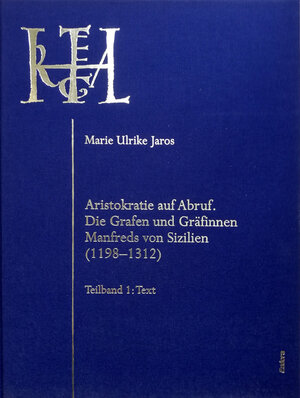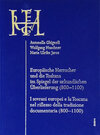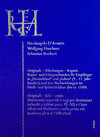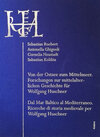
Die beiden Bände dieser Monographie (1. Teilband: Text / 2. Teilband: Katalog und Verzeichnisse) sind außer für Historikerinnen und Historiker (Mittelalter) auch für Lehrende und Lernende/Studierende der Mediävistik und der Historischen Hilfswissenschaften sowie historisch interessierte Laien von Bedeutung, insbesondere mit Blick auf Herrschafts-, Sozial-, Regional- und Kulturgeschichte Italiens und Deutschlands im Hochmittelalter.
Aristokratie auf Abruf.
Die Grafen und Gräfinnen Manfreds von Sizilien (1198–1312), 2 Bände
von Marie Ulrike JarosThe work consists of 2 volumes: subvolume 1 contains the text, subvolume 2 the catalogue and the indices!
North of the Alps, King Manfred is more of an unknown. A Sicilian king with such a name? Yes, the great-grandson of Frederick Barbarossa. Oh, aha. South of Rome, on the other hand, the memory of Re Manfredi is alive. Streets and squares are named after him, as well as bars, hotels, and pizzerias, there is wine that bears his name, and the hearty Torta di Re Manfredi. A popular figure who died tragically. Nearby is a castle of Manfred, here in the church he is also said to have been ... Anyone who follows in Manfred’s footsteps in the former Kingdom of Sicily likes to be questioned a little, reaps delighted astonishment, can listen to anecdotes. Oh, it’s supposed to be about the counts at Manfred’s side? There are also some names known: Corrado d’Antiochia, Galvano Lancia, Manfredi Maletta. They look like shining knights: courageous, noble, loyal, musical. But what tasks did these aristocrats take on in t
North of the Alps, King Manfred is more of an unknown. A Sicilian king with such a name? Yes, the great-grandson of Frederick Barbarossa. Oh, aha. South of Rome, on the other hand, the memory of Re Manfredi is alive. Streets and squares are named after him, as well as bars, hotels, and pizzerias, there is wine that bears his name, and the hearty Torta di Re Manfredi. A popular figure who died tragically. Nearby is a castle of Manfred, here in the church he is also said to have been ... Anyone who follows in Manfred’s footsteps in the former Kingdom of Sicily likes to be questioned a little, reaps delighted astonishment, can listen to anecdotes. Oh, it’s supposed to be about the counts at Manfred’s side? There are also some names known: Corrado d’Antiochia, Galvano Lancia, Manfredi Maletta. They look like shining knights: courageous, noble, loyal, musical. But what tasks did these aristocrats take on in t












